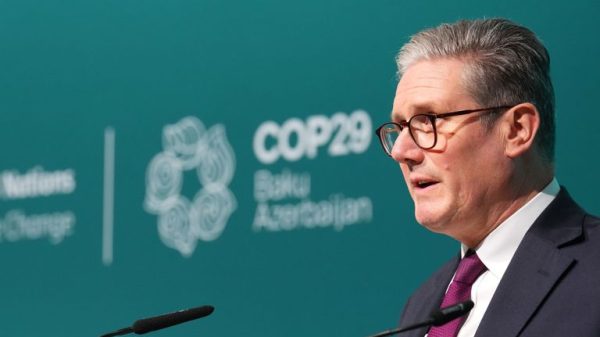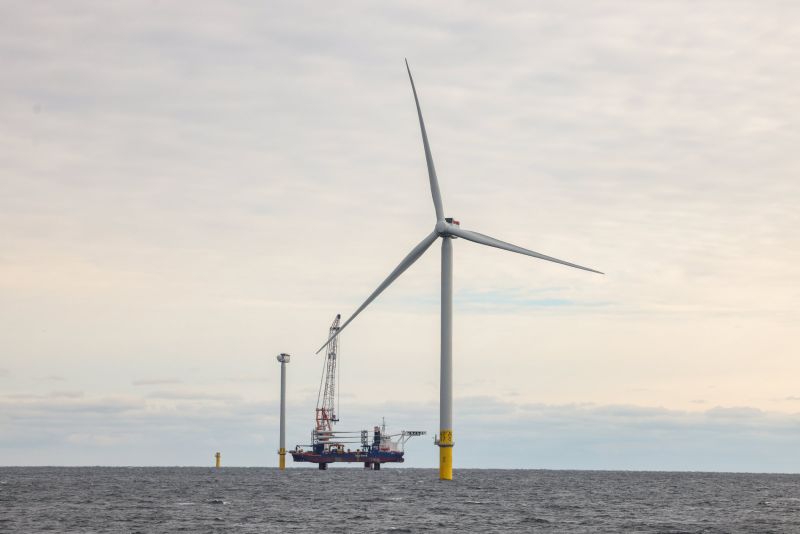After a disastrous year marked by high costs, accusations of environmental harm and project cancellations in 2023, there’s a sense the US offshore wind industry is on a rebound.
There are now two dozen turbines spinning off the East Coast – a number set to more than double by the end of the year. New projects are being announced, and perhaps most significantly, states are actually signing up to purchase the clean power generated by future ocean-based wind farms.
“There’s a lot of momentum in the industry right now,” said Sam Huntington, director of S&P Global Commodity Insights’ North American power team. “We’re past the nadir of the industry’s troubles.”
Offshore wind is on much more stable footing than it was last year, but some analysts aren’t ready to declare it a boom. The industry is still in its infancy in the US and plagued by many of the same problems as last year – high interest rates and long wait times for components like turbine blades, generators and towers.
And former President Donald Trump – a man with a long disdain for wind power – is seeking a return to the White House in 2025. Trump castigated wind as costing “a fortune” and the “most expensive energy” at a Wisconsin rally in April and called wind turbines “a bird cemetery” at a December event.
But offshore wind is increasingly Trump-proof, according to a top White House climate official, wind CEOs and an industry analyst. Too much progress has been made to be fully undone by a second Trump administration.
Still, White House national climate adviser Ali Zaidi warned that for the industry to mature and be successful, it needs a friendly administration willing to push it along.
Falling short of ambitious goals
The Biden administration set an ambitious goal for offshore wind energy: to deploy 30 gigawatts by 2030.
Zaidi is “very confident” they will meet the target. But industry analysts aren’t so sure.
“We’re not bullish,” Huntington said. “Our latest forecast has them getting about half of that – 15 gigawatts. Unless a lot of projects get approved, and Europe gives us a whole bunch of installation vessels, I don’t see how we’re ramping up to that.”
The administration recently has approved enough projects to eventually get 10 gigawatts of power on the grid, enough to power nearly 4 million homes. And the US Bureau of Ocean Energy Management plans to hold up to four lease sales this year, including ones in the Gulf of Maine and off the coast of Oregon, which are likely contenders for the massive floating turbines industry experts say the world should be moving toward.
Still, it will take years for those approved projects to come online, a timeline Huntington and offshore wind CEOs say speaks to the continuing challenges US projects face. Permitting a single project can still take years because of the multiple federal, state and local hoops developers must jump through.
Ordering equipment is another challenge. The US supply chain for offshore wind is still being built; therefore, projects are turning to European manufacturers to get blades, gearboxes, and other components.
“There’s really only three suppliers that are serving the US market” for wind turbines and the high-capacity electric cables that carry electricity back to shore, said Clint Plummer, head of New York-based company Rise Light & Power, who was formerly at Danish wind giant Ørsted. “And their lead times seem to continue to get longer.”
Compounding the problem is the fact that the US industry is so underdeveloped compared to Europe and Asia, pushing US projects to the back of the line.
“Because the US is more nascent in the development of our industry than either of those two mega markets, it simply means that we have less influence than those other regions in being able to get the attention of the manufacturers,” Plummer said.
Friendly state and federal governments
Despite persistent headwinds, the biggest change over the past year has been that the Northeast is signing up for the electricity wind farms will generate.
There’s a simple explanation for that: New England and Northeast states want to make their own energy, according to Pedro Azagra Blázquez, the CEO of offshore wind company Avangrid, which is developing wind farms off the coasts of Massachusetts and New York.
New York has been aggressively pursuing offshore wind projects, rebidding previously canceled projects and accepting those projects at higher prices.
“The fact that that these projects that were in so much trouble were rebid and accepted at higher prices was a really positive sign for the industry,” Huntington said. But it will also mean electricity from wind will initially come at a higher cost, given supply-chain constraints and high interest rates.
Blázquez and Plummer give the Biden administration high marks for setting an ambitious goal for offshore wind and trying to ease federal permitting for the projects. But they’re also not overly worried about what a Trump administration could mean for the industry.
“Our obligation is to work well with any administration, because what is clear is these investments bring economic development, they bring jobs,” Blázquez said.



























